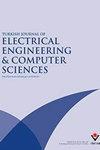基于ems的模糊控制UPQC改进智能微电网电能质量
IF 1.5
4区 计算机科学
Q4 COMPUTER SCIENCE, ARTIFICIAL INTELLIGENCE
Turkish Journal of Electrical Engineering and Computer Sciences
Pub Date : 2019-04-01
DOI:10.3906/ELK-1807-166
引用次数: 3
摘要
在智能微电网和配电系统中,普遍存在的电能质量问题是电压暂降、电压膨胀和谐波畸变。实现具有适当幅度和相位的纯正弦波形是目前研究和发展的热点。本文的目的是评估和缓解智能微电网在24小时周期内的谐波、电压凹陷和电压膨胀,同时考虑太阳能发电因光伏电池辐照变化而产生的变化,风力发电因风速变化而产生的变化,以及白天周期内线性和非线性负荷曲线的变化。通过实施一种新的全模糊控制统一电能质量调节器(UPQC),缓解了以电流谐波、电压凹陷和电压膨胀为表现的电能质量问题。它由能源管理系统(EMS)控制。本文介绍了一种新的UPQC全模糊控制系统。此外,在电流控制中使用模糊控制来代替比例积分控制器,使其在大范围的工作点上具有可接受的性能。新型的ems连接UPQC在要求的时间内激活UPQC进入电网。这种方法通过增加UPQC的生命周期有很多好处。通过MATLAB/Simulink仿真验证了该系统对上述问题的解决效果。并将所得结果与常规方法进行了比较。实验结果验证了所提出的UPQC在监测期间不同运行条件下的电流总谐波畸变、电压暂降和电压膨胀等问题上的优越性能。本文章由计算机程序翻译,如有差异,请以英文原文为准。
Power quality improvement of smart microgrids using EMS-based fuzzy controlled UPQC
The prevalent power quality problems in smart microgrids and power distribution systems are voltage sag, voltage swell, and harmonic distortion. The achievement of pure sinusoidal waveform with proper magnitude and phase is currently a great research and development concern. The aim of this paper is to evaluate and mitigate the smart microgrid harmonics, voltage sag, and voltage swell throughout a 24-h cycle, taking into consideration the variation in solar power generation due to changes in irradiation received by photovoltaic cells, the variation in wind power generation due to changes in wind speed, and the variation of linear and nonlinear load profiles during the day’s cycle. The mitigation of the power quality issues manifested in current harmonics, voltage sag, and voltage swell is achieved through the implementation of a new fully fuzzy controlled unified power quality conditioner (UPQC). It is controlled by an energy management system (EMS). This paper introduces a new control system for the UPQC using full fuzzy logic control. Moreover, fuzzy control is used in current control instead of proportional integral controllers so that it has acceptable performance over a wide range of operating points. The novel approach of an EMS-connected UPQC activates the UPQC at the required time only into the grid. This approach has many benefits by increasing the UPQC lifetime. The effect of the proposed system on the aforementioned issues has been validated through simulation by MATLAB/Simulink. The results are compared with those obtained by conventional methods. The results verify the superior performance of the proposed UPQC to mitigate the problems of current total harmonic distortions, voltage sag, and voltage swell under different operating conditions during the monitoring period.
求助全文
通过发布文献求助,成功后即可免费获取论文全文。
去求助
来源期刊

Turkish Journal of Electrical Engineering and Computer Sciences
COMPUTER SCIENCE, ARTIFICIAL INTELLIGENCE-ENGINEERING, ELECTRICAL & ELECTRONIC
CiteScore
2.90
自引率
9.10%
发文量
95
审稿时长
6.9 months
期刊介绍:
The Turkish Journal of Electrical Engineering & Computer Sciences is published electronically 6 times a year by the Scientific and Technological Research Council of Turkey (TÜBİTAK)
Accepts English-language manuscripts in the areas of power and energy, environmental sustainability and energy efficiency, electronics, industry applications, control systems, information and systems, applied electromagnetics, communications, signal and image processing, tomographic image reconstruction, face recognition, biometrics, speech processing, video processing and analysis, object recognition, classification, feature extraction, parallel and distributed computing, cognitive systems, interaction, robotics, digital libraries and content, personalized healthcare, ICT for mobility, sensors, and artificial intelligence.
Contribution is open to researchers of all nationalities.
 求助内容:
求助内容: 应助结果提醒方式:
应助结果提醒方式:


